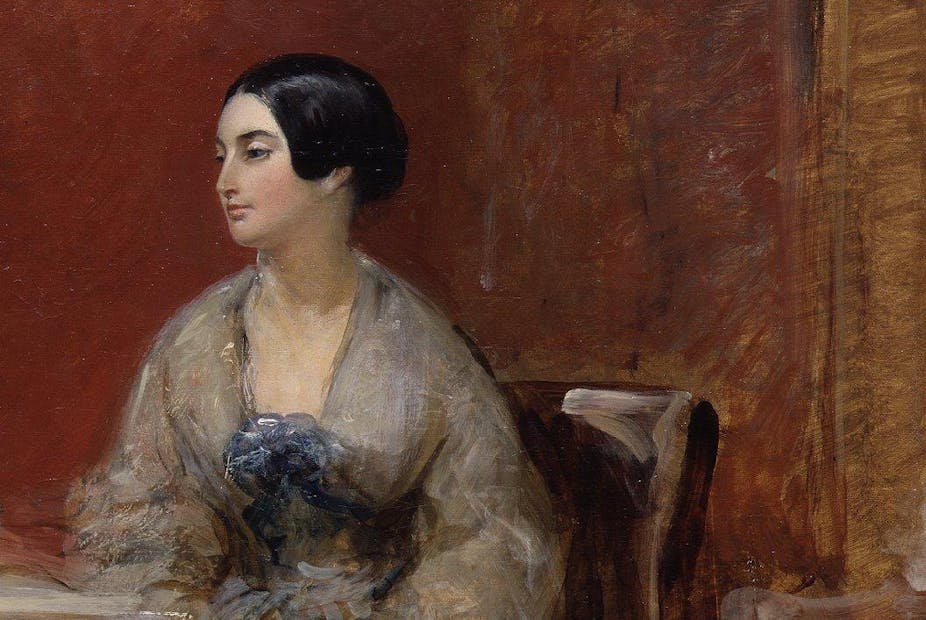The women of the Suffragette movement are often depicted as pioneers in the struggle for female emancipation. But Edwardian women were not the founding mothers of the cause for equality. A generation before, Victorian women had begun the campaign. And among them was an an unlikely heroine by the name of Caroline Norton.
Norton wasn’t a feminist. She didn’t even believe in equality for women. But through her battles with the legal system she demonstrated how little protection the law afforded in cases of abuse of power. She ultimately secured a landmark victory for women along the way.
Caroline was born in 1808 into a genteel but impoverished family. In 1827, at the age of 19, she married Tory MP George Norton. They had three sons.

It was a turbulent marriage and Caroline was subjected to physical and emotional abuse. George wanted to control his wife but she resisted. She openly mocked him and flirted with other men. Caroline’s family was associated with the rival Whig party and she was greatly admired by Whig men. The gossip that surrounded Caroline humiliated George, increasing his misery and rage.
The collapse of the marriage culminated in June 1836 when George Norton sued the then prime minister, Lord Melbourne – a Whig – claiming he had had an affair with Caroline. He not only wanted to prove his wife had committed adultery, which would be the first step towards obtaining a divorce, but his action was part of a plot by the Tories to try to bring down the Whig government.
Although Melbourne successfully defended the action, Caroline’s reputation was ruined and she was labelled a “scandalous woman”. The Nortons had separated but Caroline remained George’s property. She was unable to divorce him and had no legal rights.
The battle begins
George refused Caroline access to their children, which led to her starting a campaign to change the law. She was already an accomplished and established writer so she used her literary skills to produce a series of political pamphlets – a powerful persuasive tool at the time.
The aim was to educate the public about the plight of mothers and to persuade MPs to support the cause. The first pamphlet was published in 1837 under the title: Observations on the Natural Claims of a Mother to the custody her Children as Affected by the Common Law Rights of the Father. It argued that all children under the age of seven should remain in the custody of their mother and that the decision as to where older children should live should be decided by the court – not the father. She made 500 copies and circulated them privately.
Caroline enlisted the help of influential friends to introduce a bill into parliament to give judges the power to allow either parent to have access to children under the age of 12. She published a second pamphlet, The Separation of Mother and Child By the Law of Custody of Infants Considered, in which she wrote:
The fact of the wife being innocent and the husband guilty, or of the separation being an unwilling one on her part, does not alter his claim: the law has no power to order that a women shall have even occasional access to her children, though she could prove that she was driven by violence from her husband’s house and that he had deserted her for a mistress. The father’s right is absolute and paramount, and can be no more be affected by the mother’s claim, than if she had no existence.
It was a struggle but the bill eventually became law in August 1839. It became law that if a wife was legally separated or divorced from her husband and had not been found guilty of adultery she was allowed custody of her children up to the age of seven and access thereafter. Caroline’s campaign had brought the issue into the public domain and worn away opposition to the bill.
Bitter sweet victory
But the success of the bill did not restore Caroline’s children to her. Since the law only applied in England, Wales and Ireland, George took the children to Scotland where she could not claim access. Only when one of her sons died was she allowed to see the other chidren.
But Caroline didn’t give up. She continued her campaign, publishing English Law for Women in the Nineteenth Century in 1854 and in June 1855 wrote A Letter to Queen Victoria on Lord Chancellor Cranworth’s Marriage and Divorce Bill. In 1857 the Matrimonial Causes Act was finally passed. It contained 68 clauses, four of which came from Caroline’s pamphlets. These included a woman’s right to form a contract, to receive maintenance as directed by the court, to inherit and bequeath property and to keep possession of her own earnings.
Caroline Norton was not seeking female equality in her pamphlet to the Queen, Caroline even wrote: “The natural position of woman is inferiority to man. Amen! … I never pretended to the wild and ridiculous doctrine of equality.” Her battle was forced upon her by personal circumstances – but the significance of what she achieved cannot be underestimated. She was a catalyst for change.
Caroline Norton is largely a forgotten figure but her story is timeless. It reflects the injustice women endured in Victorian society and continue to suffer today. So many elements of Caroline’s story will resonate with women – women who have escaped violence, fought for custody of their children – their struggle was her struggle. Even today, women in many cultures are still fighting for the kind of freedom she championed.
Caroline secured a significant victory for women, the Infant Custody Act gave legal rights for women and made them visible before the law. Her determination began the process of legislative change without this women couldn’t start the fight for the vote.

